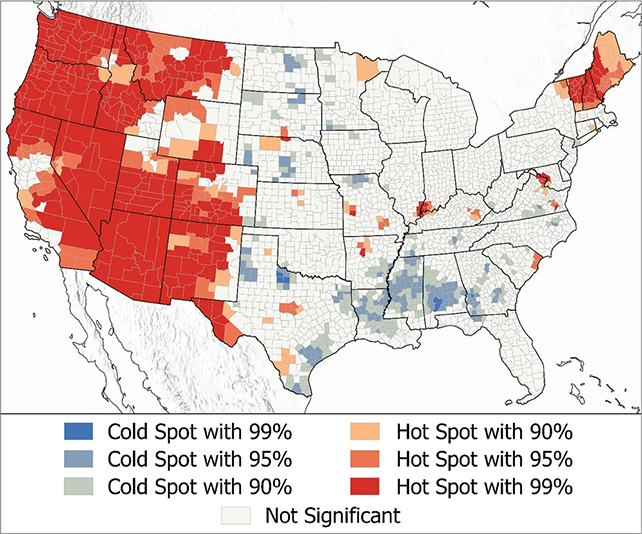If you want to see unidentified flying objects (UFOs) in the skies across the US, head west.
Researchers from the University of Utah wanted to look into how local environmental factors affect sightings of these UFOs. Now officially described as unidentified anomalous phenomena or UAPs, the term refers to anything seen in the sky which can't readily be attributed to natural phenomena or openly described technology.
The analysis of reports recorded in the past couple of decades and measures of features such as sky cover and lighting conditions revealed most hot spots can be found largely in less brightly lit, more open states like Washington, Nevada, and New Mexico.

"The West has a historical relationship to UAP – Area 51 in Nevada, Roswell in New Mexico and here in Utah we have Skinwalker Ranch in the Uinta Basin and military activity in the US Army Dugway Proving Ground," says geographer Richard Medina, from the University of Utah.
"Plus, there's a robust outdoor community that recreates in public lands year-round. People are out and looking skyward."
The researchers got to work on 98,724 sightings logged by the National UFO Reporting Center (NUFORC) between 2001 and 2020. The NUFORC accepts reports in writing, over the phone, and over the web.
Two conditions were assessed for each sighting: sky view potential (taking into account cloud cover and light pollution) and the potential for objects to be present in the sky (based on how many airports and military bases are nearby).
"The idea is that if you have a chance to see something, then it's more likely that you're going to see unexplained phenomena in the sky," says Medina.
Fewer sightings were logged in the southeast of the US, and across the central plains of the country, while credible relationships were spotted between clusters of sightings and commercial and military air traffic.
The thinking is that people appear to be spotting common technology under conditions that makes it harder to see them for what they really are. Being able to flag when that is likely to happen will help in identifying anomalies that need investigating, whether they're threats to national security, unusual atmospheric phenomena, or, yes, even spacefaring tourists.
From SpaceX rockets to consumer drones, there's more tech in the sky than ever before. Having data on what factors influence sightings, and where they're most likely to happen, is going to be useful in figuring out exactly what's being reported.
"There are many factors that can contribute to the report of anomalous objects," says geographer Simon Brewer from the University of Utah.
"By examining the spatial distribution of reports and how they relate to the local environment, we hope to provide some geographical context that may help resolve or understand reports by both the public and in military settings."
The research has been published in Scientific Reports.
